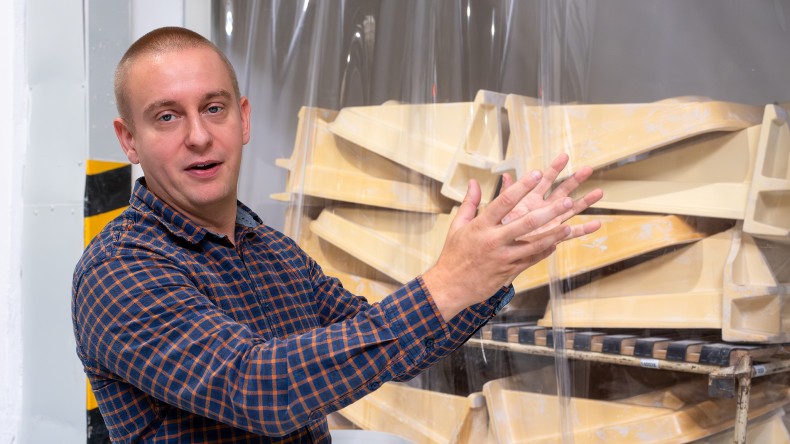From Magic to Method
Ceramic Production, scientifically
The demystification of ceramic production is progressing. How Geberit is bringing a scientific approach to production - a look at the ceramics plant in Koło.
Just a few years ago, producing sanitary ceramics resembled an act of alchemy. Clay, quartz, feldspar, and water were mixed into what is known as slip – natural ingredients whose interaction was influenced by countless factors: the weather outside, air circulation inside the factory, and the quality of the water. “The old masters of ceramics were considered almost like magicians who could tell at a glance whether the slip would turn out well,” says Łukasz Olejnik, Head of Production at the Polish ceramics plant in Koło. “It was gut feeling – not science.”
Data instead of intuition
Since early 2023, a fresh breeze has been blowing through Koło: feelings and intuition are being replaced by facts and data. “We are building on systematic understanding,“ explains Łukasz Olejnik.
Anyone accompanying Łukasz Olejnik through the factory can sense his enthusiasm. He stops at monitors displaying real-time climate parameters from the casting hall. He points to heavy curtains surrounding the hall where the moist ceramic moulds are located:
“They prevent draughts from altering the climatic conditions inside the hall. This protects our process from random influences.
“Resource-efficient quality
Temperature, humidity, air circulation, mixing ratios, dwell times – everything is measured, documented, and adjusted. That’s the core of the project: understanding which parameters are critical – and keeping them stable. The results speak for themselves: Within two years, waste, energy consumption, CO₂ emissions and water consumption have been significantly reduced. “Better quality with lower resource consumption,“ summarizes Łukasz Olejnik. “That's true sustainability.“
“We didn’t destroy the magic. We just explained it.“
Łukasz Olejnik, Head of Production, Ceramics plant Koło (PL)

Resource-efficient quality
Temperature, humidity, air circulation, mixing ratios, dwell times – everything is measured, documented, and adjusted. That’s the core of the project: understanding which parameters are critical – and keeping them stable. The results speak for themselves: Within two years, waste, energy consumption, CO₂ emissions and water consumption have been significantly reduced. “Better quality with lower resource consumption,“ summarizes Łukasz Olejnik. “That's true sustainability.“
The success at Koło is just the beginning: the scientific approach is gradually being extended to other processes in the complex production of ceramics. A traditional craft is being transformed into a modern, efficient, resource-friendly, and reliable process.
Has the magic of ceramics been lost forever? Łukasz Olejnik smiles: “We didn’t destroy the magic. We just explained it.“
